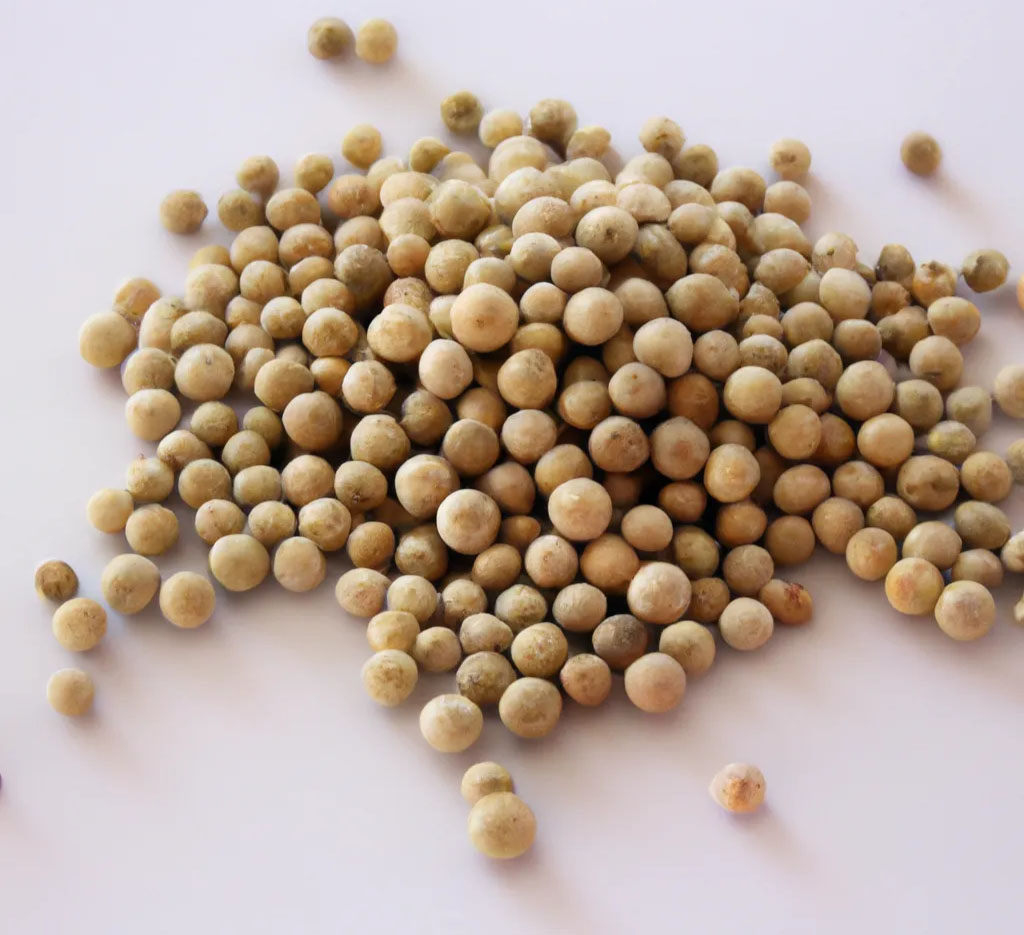Botanical Name: Piper nigurm
White peppercorns are a subtle yet essential spice derived from the same plant that produces black and green peppercorns. Their processing method distinguishes white peppercorns, which gives them a unique flavor profile. Unlike black peppercorns, which are harvested when the berries are still green and then dried, white peppercorns fully ripen on the vine. After harvesting, the outer skin of the peppercorn is removed by soaking the berries in water and then rubbing off the outer layer, leaving behind the inner seed.
This process results in a milder and earthier flavor compared to black pepper, with a distinct musky aroma and a clean, sharp heat. White pepper’s flavor is less complex than black pepper, lacking the robust, fruity notes of black peppercorns, but it offers a more straightforward spiciness. This makes it a popular choice in dishes where a milder pepper flavor is desired without the visible black flecks, such as in white sauces, soups, or creamy dishes. Its subtle heat is especially favored in Asian cuisines, particularly in Chinese, Thai, and Vietnamese cooking, where it is often used in soups, stir-fries, and light sauces to add heat without overpowering the dish.
One of the main reasons white peppercorns are used is their aesthetic appeal. In lighter-colored dishes, like mashed potatoes, béchamel sauce, or cream-based soups, white pepper blends in seamlessly, adding the desired spice without altering the dish’s appearance. Additionally, its subtle flavor complements delicate dishes where the boldness of black pepper might be too overpowering.
White peppercorns are also a key ingredient in many European recipes, where their less pungent flavor works well in cream-based sauces, such as the French velouté, and in traditional German and Scandinavian dishes. In combination with other spices, white pepper adds depth to spice blends and marinades, balancing out stronger flavors with its mild heat.

